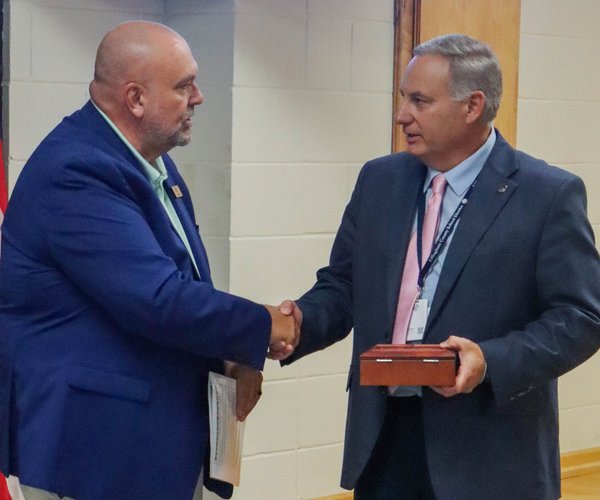Georgia Southern University archaeologists will begin a major conservation project to identify and conserve 150-year-old metal artifacts found at Camp Lawton, a Confederate prisoner of war camp located at what is now Magnolia Springs State Park in Millen. The project is the next step in preparation for the opening of a planned history center at the park.
As part of the project, Georgia Southern archaeologists will X-ray recovered artifacts to determine if solid metal remains inside visible corrosion. In a unique partnership, the team will be working with veterinarian Gary Edwards and the staff at Gateway Animal Hospital of Statesboro who are graciously donating their time and equipment to X-ray the artifacts before conservation is attempted.
“Some of the artifacts that we have discovered are extremely corroded which is making it difficult to identify what they are. The X-ray will enable us to clearly identify the shape of the artifact if the metal has not totally corroded away,” said Matt Newberry, a Georgia Southern graduate student working on the Camp Lawton project team.
In the fall of 2009, Georgia Southern University, in partnership with the Georgia Department of Natural Resources and U.S. Fish and Wildlife, began researching Camp Lawton, which was originally constructed in 1864 to alleviate overcrowding at Andersonville Prison. Once constructed and opened, Camp Lawton became the world’s largest prison and would eventually house more 10,000 Union POWs.
The ongoing excavation of archaeological sites is just the first step in the research process. Once artifacts are recovered, especially metal, they are treated to preserve them before they are put on display. Georgia Southern archaeologists are using a variety of conservation methods to treat and preserve artifacts from Camp Lawton, ranging from mild mechanical removal of surface rust to in-depth chemical treatments.
When metal artifacts are buried in the ground, they begin to corrode in the soil and will eventually reach a state of equilibrium with the water and mineral content of their new environment. After 150 years, when the artifacts have been excavated, they suddenly have an entirely different environment to react to. This causes further damage if not addressed in a timely manner.
“It is important that we work to conserve these artifacts so that they can help tell the story of Camp Lawton to future generations,” said Lance Greene, assistant professor of Anthropology in Georgia Southern’s Department of Sociology and Anthropology.
The first step in artifact conservation involves soaking the artifacts in distilled water which removes the accumulated salts. Next, any loose or disfiguring corrosion on the surface of the artifact is carefully removed. This can be delicately and slowly achieved with small hand tools if the artifact is especially fragile. Alternatively, electrolysis may be used to remove corrosion from artifacts that are solid enough to withstand the process.
Electrolysis involves using an electrical current moving through a solution to stabilize corroded metals and remove accumulated rust. After the cleaning is completed, artifacts are sealed against further environmental damage and ready for display in a climate-controlled museum setting.
“Once the conservation process is completed, the Camp Lawton artifacts will be stable and ready for permanent display in the new History Center,” said Greene.








